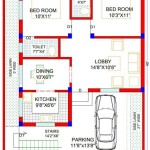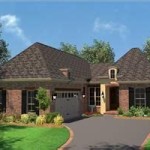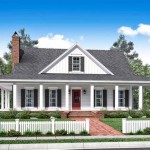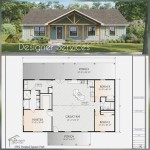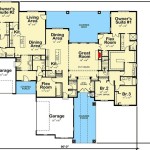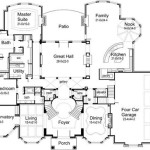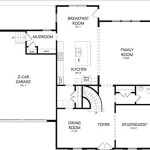Home Plans With Secret Passageways And Rooms
The allure of hidden spaces within a home has captured the imagination for centuries. From historical castles with concealed escape routes to modern residences incorporating elements of surprise and privacy, the concept of secret passageways and rooms continues to intrigue homeowners and designers alike. This article explores the design considerations, security aspects, and practical applications of integrating these unique features into home plans.
Secret passageways and rooms offer a unique blend of fun and functionality. They can serve a variety of purposes, from providing a safe haven in emergencies to creating dedicated spaces for hobbies or private reflection. The inclusion of these hidden areas requires careful planning and execution, ensuring structural integrity, accessibility, and alignment with the overall architectural design.
Planning and Design Considerations
The integration of secret passageways and rooms begins with a thorough assessment of the existing or planned home structure. Load-bearing walls, plumbing lines, electrical wiring, and HVAC systems must be carefully considered to avoid costly relocations or structural compromises. The size and location of the secret space are crucial factors influencing the overall design.
The entrance mechanism is a key element of a successful secret passageway. Common options include bookshelves that swing open, seemingly solid walls that pivot, and hidden panels that slide away to reveal the concealed space. The mechanism should be discreet, reliable, and easily operable by authorized individuals. It is also essential to ensure that the entrance blends seamlessly with the surrounding décor, avoiding any obvious visual cues.
Disguising the entrance can be achieved through careful attention to detail. For example, a bookshelf entrance can be designed with unevenly spaced shelves, slightly askew books, or a unique locking mechanism that is cleverly concealed. The use of similar materials, textures, and colors throughout the entrance and surrounding walls is also critical for maintaining the illusion of continuity.
Within the secret room itself, careful consideration must be given to ventilation, lighting, and climate control. Adequate ventilation is necessary to prevent the buildup of stale air or moisture. Natural light can be introduced through strategically placed skylights or light wells, while artificial lighting should be designed to create a comfortable and inviting atmosphere. Climate control systems should be integrated to maintain a consistent temperature and humidity level, ensuring the room remains habitable and prevents damage to any stored items.
Accessibility is another important design factor. While the entrance should be concealed from unauthorized individuals, it should be easily accessible to those who are authorized to use the space. This may involve incorporating multiple entrance options, such as a keypad entry system or a biometric scanner, in addition to the hidden entrance. The location of the secret room should also be carefully considered, taking into account factors such as proximity to escape routes and ease of access from other areas of the home.
The purpose of the secret room will greatly influence its design. A panic room, for instance, requires reinforced walls, a secure door, and a communication system to contact emergency services. A hobby room, on the other hand, might benefit from ample storage space, specialized lighting, and soundproofing. Understanding the intended use of the secret space is vital for ensuring that it meets the specific needs of the homeowner.
Security and Safety Aspects
The inclusion of secret passageways and rooms raises important security and safety considerations. The primary purpose of these spaces is often to provide a secure location for individuals or valuables in the event of an emergency. Therefore, it is essential to implement security measures that deter unauthorized access and protect the occupants or contents of the secret space.
Reinforced walls and doors are a critical security feature for any secret room. Walls can be constructed from concrete, steel, or other durable materials to resist forced entry. Doors should be solid-core and equipped with multiple locking mechanisms, including deadbolts, chain locks, and security plates. The doorframe should also be reinforced to prevent it from being easily breached.
An alarm system is an essential component of a comprehensive security plan. The secret room should be equipped with a separate alarm system that is independent of the main house alarm. This system should include sensors on the door and windows, as well as motion detectors to detect unauthorized entry. The alarm should be connected to a monitoring service that can dispatch emergency personnel in the event of an alarm trigger.
A communication system is also essential for a panic room or emergency shelter. This system should allow occupants to communicate with emergency services or other individuals outside the room. Options include a landline telephone, a cellular phone, a two-way radio, or an internet-based communication system. The system should be battery-powered to ensure it remains operational in the event of a power outage.
Ventilation and air filtration systems are crucial for maintaining a safe and healthy environment within the secret room. The room should be equipped with a ventilation system that can provide fresh air from an external source. An air filtration system can remove airborne contaminants, such as dust, pollen, and smoke. This is particularly important if the room is intended to be used as a shelter during a disaster or emergency.
Emergency supplies are essential for any secret room that is intended to be used as a shelter. These supplies should include food, water, first-aid supplies, medications, and other essential items. The quantity of supplies should be sufficient to sustain the occupants for an extended period of time. It is also important to regularly check and replenish these supplies to ensure they remain fresh and usable.
Fire safety is another important consideration. The secret room should be equipped with a fire extinguisher and a smoke detector. Fire-resistant materials should be used in the construction of the room to prevent the spread of fire. A fire escape plan should also be developed and practiced regularly to ensure that occupants can evacuate the room safely in the event of a fire.
Practical Applications and Examples
The practical applications of secret passageways and rooms are diverse, ranging from providing a safe haven to creating unique spaces for entertainment or hobbies. The specific use of these hidden areas will depend on the individual needs and preferences of the homeowner.
One common application is the use of secret rooms as panic rooms or safe rooms. These spaces are designed to provide a secure location for individuals to retreat to in the event of a home invasion, natural disaster, or other emergency. Panic rooms are typically equipped with reinforced walls, a secure door, a communication system, and emergency supplies.
Another popular application is the use of secret passageways to connect different areas of the home in a discreet and unexpected way. For example, a secret passageway could connect a master bedroom to a home office, allowing the homeowner to move between these spaces without having to pass through the main living areas. These passageways can also be used to create hidden entrances to wine cellars, libraries, or other private spaces.
Secret rooms can also be used as dedicated spaces for hobbies or recreational activities. A hidden room could be used as a home theater, a game room, or a private art studio. These spaces can be designed to be soundproofed, climate-controlled, and equipped with specialized lighting and equipment to enhance the experience.
Some homeowners choose to incorporate secret passageways and rooms as a way to add a touch of whimsy and intrigue to their homes. These hidden spaces can be used as secret playrooms for children, hidden reading nooks, or unique storage areas. The possibilities are limited only by the imagination of the homeowner and the skill of the designer.
Examples of homes with secret passageways and rooms can be found throughout history and in contemporary architecture. Historic castles often feature hidden passages that were used for escape or defense. Modern homes are increasingly incorporating these features, often with sophisticated designs and innovative entrance mechanisms.
The design and construction of secret passageways and rooms require specialized expertise and attention to detail. It is essential to work with experienced architects, builders, and security professionals to ensure that these features are properly integrated into the home and that all safety and security concerns are addressed. The investment in these hidden spaces can add significant value to a home and provide a unique and rewarding experience for its occupants.

Secret Room Rooms Victorian House Plans

Country Home Plan With Two Masters And A Secret Room 36025dk Architectural Designs House Plans

Storybook Inspiration With Secret Passage 17570lv Architectural Designs House Plans

Image Result For House Plans With Rooms And Passageways Country Floor

Storybook Inspiration With Secret Passage 17570lv Architectural Designs House Plans

8 Home Plans Secret Room Ideas Rooms House Design

Modern French Style House Plan With Upstairs Secret Room For The Kids 22641dr Architectural Designs Plans

Plan 5606 Ranch

15 Plans With Secret Rooms Ideas House Design

House Plan 5 Bedrooms 2 Bathrooms 90108 Drummond Plans

